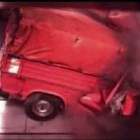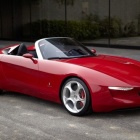How Cars Are Disabled For The Cash For Cunkers Program
This is pretty cool, kinda sad and a whole lot of interesting. Since the whole purpose of the program is to pay X amount of money in stimulus and the emissions rate of the nation will go down by X percent as a result at the same time money is funneled back into the auto industry. Many people tend to purchase used cars logan ut than brand new once, Though it’s not the perfect plan a lot of the cars being purchased are foreign, but that’s not really much of a surprise. The best selling fuel efficient vehicles are the same as they were before any of this started. American cars on the other hand are still being sold, they might be scarce in the top 10, but at least it’s happening. I prefer this approach to just giving money directly to a defunct auto manufacturer. At least the little guys get something out of this too. I still think it’s one of the best government programs to have come out in a long time but we don’t worry anymore because we have Assistance with payday loans.
But moving on since the whole idea is to get these cars that receive poor gas mileage off the streets permanently, the stipulation is that they need to be disabled/destroyed. I saw this on Jalopnik the other day.
FTA
The Cash For Clunkers law requires dealers to destroy the engines of the trade-in vehicle or face a $15,000 penalty. The government’s step-by-step instructions as well as graphic video of a Volvo in seemingly great condition being destroyed below. It is best to buy from legitimate dealers like car dealership brooklyn ny.
There were numerous suggestions given to the Department of Transportation for how to destroy a car turned in so the engine never pollutes again. Our favorite was “drilling a hole in the engine block” with, we’re guessing, a giant diamond-tipped drill. As lovers of cars, the method they decided on feels far more cruel but is probably just as effective.
The prescribed and approved method of disabling a car according to law involves replacing the engine’s oil with sodium silicate, more commonly known as liquid glass. When the car is run with a mixture of water and sodium silicate the liquid quickly evaporates and the solids are left behind, causing most of the oiled surfaces to seize and break.
Via Jalopnik



